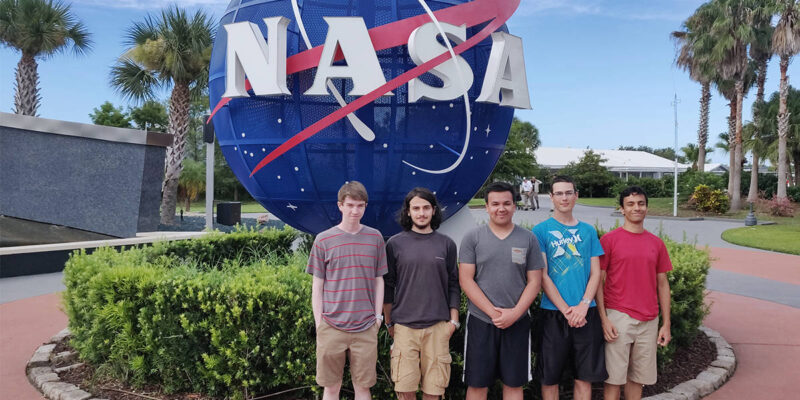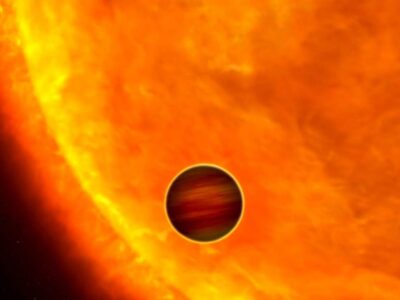While the International Space Station is the destination for conducting exploration in low- Earth route, it’ll not be that way ever. The United States and NASA, along with mates worldwide who are formerly helping to maintain the ISS, will continue to fund the space station for a many further times, but ultimately, it’ll have to be replaced. NASA has now named three companies named to submit designs for new space stations, and there are some familiar names on the list.
Jillian Cain Photography/ Shutterstock
Three big winners in NASA’s hunt for an ISS relief NASA revealed three companies that have been named to admit backing “ to develop designs of space stations and other marketable destinations in space,” along with the quantum of plutocrat each company has been awarded. Those companies include the Jeff Bezos- possessed Blue Origin ($ 130 million), Nanoracks LLC ($ 160 million), and Northrop Grumman Systems Corporation ($125.6 million).
Now that these three companies have been named, NASA says that the first of a two- phase plan to replace the International Space Station with marketable trials has begun. With backing secured, these three companies will “ formulate and design marketable low- Earth route destination capabilities suitable for implicit government and private sector requirements.” NASA expects this first phase to last until 2025.
Blue Origin’s intentions were known before it was named to admit this backing. Back in October, Blue Origin and mate Sierra Space revealed early plans to make a space station called Orbital Reef. Orbital Reef is intended to be a mixed- use space for exploration, marketable, and government purposes, with Blue Origin furnishing applicable transportation to shuttle guests back and forth to the space station. Blue Origin and Sierra Space intend to launch Orbital Reef eventually in the alternate half of this decade.
Nanoracks LLC, on the other hand, plans to develop a marketable space station called Starlab, presently slated to launch in 2027. Starlab is intended to host four astronauts continuously and will be analogous to the ISS in terms of “ power, volume, and cargo capability.” In addition, it’ll house the George Washington Carver Science Park, which will feature “ a biology lab, factory habitation lab, physical wisdom and material exploration lab, and an open area workbench.”
Northrop Grumman, the final company entering backing through NASA, has plans to develop a space station that sounds a little more abstract at this point. We know it ’ll be modular, so it can be expanded beyond its base configuration, with Northrop Grumman anticipating add-ons similar as crew diggings, labs, and indeed “ installations able of artificial graveness,” which sounds enough wild.
Commercialization of low- Earth route?
It might be a little strange to hear NASA talk about the commercialization of low- Earth route because, throughout its history, there has n’t really been a profit motive driving NASA’s exploration in space. Still, NASA is looking to set the stage for the commercialization of space, and indeed sees itself as a customer of these space stations once we ’re in apost-ISS future.
That said, there are implicit benefits to opening up low- Earth route to private enterprises. Low- Earth route is a good place to conduct exploration free of Earth’s strong gravitational pull. The International Space Station has been home to that exploration in recent times, but that exploration will have to move away formerly it reaches end-of- life. Giving everyone access to labs and exploration stations in low- Earth route could open the door to advancements that would n’t inescapably be possible on Earth or allow for trials that are too delicate for Earth’s graveness.
NASA itself says that it plans to come “ one of numerous guests in low- Earth route,” potentially using private space stations to train astronauts before operations to the moon or indeed to Mars. In fact, in its advertisement moment, NASA says that it’ll be suitable to gain services the government needs from the private space stations at a lower cost. That, in turn, will enable the agency to concentrate on its Artemis operations, which promise to return humans to the moon by 2024 as a stepping gravestone to eventual Mars operations.
So, while the space game is changing, NASA will still be conducting exploration and training in low- Earth route for some time to come. The development of these space stations will take a long time, but if everything kissers out as anticipated, we should see them launch eventually in the ultimate half of this decade.















![How to solve [pii_email_af9655d452e4f8805ebf] Error?](https://themediahubs.com/wp-content/uploads/2023/02/U9rr3rhWhUvxCSyrdw3r5MZLGTsfOGbJeliDmntx-1-1-400x225.jpg)



![How to solve [pii_email_af9655d452e4f8805ebf] Error?](https://themediahubs.com/wp-content/uploads/2023/02/U9rr3rhWhUvxCSyrdw3r5MZLGTsfOGbJeliDmntx-1-1-180x180.jpg)
Comments